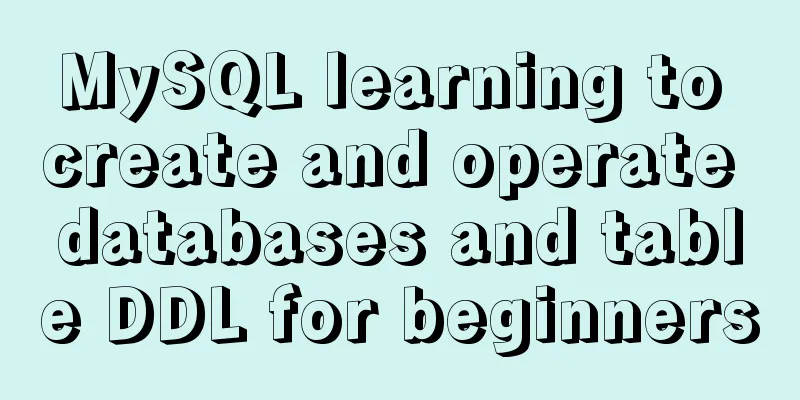Detailed explanation of Docker Secret management and use

1. What is Docker Secret 1. Scenario displayWe know that some services require passwords, such as MySQL service:
version: '3'
services:
web:
image: wordpress
ports:
-8080:80
volumes:
- ./www:/var/www/html
environment:
WORDPRESS_DB_NAME=wordpress
WORDPRESS_DB_HOST: mysql
WORDPRESS_DB_PASSWORD: root
networks:
- my-network
depends_on:
-mysql
deploy:
mode: replicated
replicas: 3
restart_policy:
condition: on-failure
delay: 5s
max_attempts: 3
update_config:
parallelism: 1
delay: 10s
mysql:
image: mysql
environment:
MYSQL_ROOT_PASSWORD: root
MYSQL_DATABASE: wordpress
volumes:
-mysql-data:/var/lib/mysql
networks:
- my-network
deploy:
mode: global
placement:
constraints:
- node.role == manager
volumes:
mysql-data:
networks:
my-network:
driver: overlayYou can see that the two service passwords in this docker-compose.yml are in plain text, which makes it not very secure. So what is Docker secret and can it solve the above problem? Docker Secret
We know that the manager node maintains consistency of state through the distributed storage database Raft Database, which itself keeps information secret, so this database can be used to store some sensitive information, such as account numbers, passwords, etc., and then allow it to access by authorizing the service, thus avoiding the password from being displayed in plain text. In summary, the management of secrets in a secret swarm is accomplished by the following steps:
2. Creation and use of Docker Secret 1. CreationLet's first look at some help instructions created: [root@centos-7 ~]# docker secret --help Usage: docker secret COMMAND Manage Docker secrets Commands: create Create a secret from a file or STDIN as content inspect Display detailed information on one or more secrets ls List secrets rm Remove one or more secrets Run 'docker secret COMMAND --help' for more information on a command. The first command is the created command. Let’s see what help information it has: [root@centos-7 ~]# docker secret create --help Usage: docker secret create [OPTIONS] SECRET [file|-] Create a secret from a file or STDIN as content Options: -d, --driver string Secret driver -l, --label list Secret labels --template-driver string Template driver You can see that the secret can come from a file or a standard output. Then there are two ways to create Secret:
1. Create based on files First, create a file to store the password [root@centos-7 ~]# vim mysql-password root Then create a secret [root@centos-7 ~]# docker secret create mysql-pass mysql-password texcct9ojqcz6n40woe97dd7k mysql-pass is the name of the secret, and mysql-password is the file we created to store the password. After executing this command, the password in the file is stored in the Raft Database of the manager node in Swarm. For security reasons, you can now delete this file directly because the password is already in Swarm. [root@centos-7 ~]# rm -f mysql-password Now you can view the secret list: [root@centos-7 ~]# docker secret ls ID NAME DRIVER CREATED UPDATED texcct9ojqcz6n40woe97dd7k mysql-pass 4 minutes ago 4 minutes ago Already exists. 2. Create based on command line [root@centos-7 ~]# echo "root" | docker secret create mysql-pass2 - hrtmn5yr3r3k66o39ba91r2e4 [root@centos-7 ~]# docker secret ls ID NAME DRIVER CREATED UPDATED texcct9ojqcz6n40woe97dd7k mysql-pass 6 minutes ago 6 minutes ago hrtmn5yr3r3k66o39ba91r2e4 mysql-pass2 5 seconds ago 5 seconds ago This method is still very simple to create successfully (II) Other operationsSo are there any other operations for secret? [root@centos-7 ~]# docker secret --help Usage: docker secret COMMAND Manage Docker secrets Commands: create Create a secret from a file or STDIN as content inspect Display detailed information on one or more secrets ls List secrets rm Remove one or more secrets Run 'docker secret COMMAND --help' for more information on a command. You can see that in addition to the create command, there are also inspect, ls, and rm commands. 1. inspect
[root@centos-7 ~]# docker secret inspect mysql-pass2
[
{
"ID": "hrtmn5yr3r3k66o39ba91r2e4",
"Version": {
"Index": 4061
},
"CreatedAt": "2020-02-07T08:39:25.630341396Z",
"UpdatedAt": "2020-02-07T08:39:25.630341396Z",
"Spec": {
"Name": "mysql-pass2",
"Labels": {}
}
}
]
Display some details of secret 2.rm [root@centos-7 ~]# docker secret rm mysql-pass2 mysql-pass2 [root@centos-7 ~]# docker secret ls ID NAME DRIVER CREATED UPDATED texcct9ojqcz6n40woe97dd7k mysql-pass 12 minutes ago 12 minutes ago Deleting a secret (III) Use of Secret in a Single Container 1. View secret in container We have created a secret. How can we authorize it to a specific service after starting a service so that it can see it? First check if there are similar commands or parameters in the command to create the service: [root@centos-7 ~]# docker service create --help Usage: docker service create [OPTIONS] IMAGE [COMMAND] [ARG...] Create a new service Options: --config config Specify configurations to expose to the service ... --secret secret Specify secrets to expose to the service ... ... There is indeed such a command that can expose the secret to the service when creating the service. 2. Create a service [root@centos-7 ~]# docker service create --name demo --secret mysql-pass busybox sh -c "while true; do sleep 3600; done" zwgk5w0rpf17hn77axz6cn8di overall progress: 1 out of 1 tasks 1/1: running verify: Service converged Check which node the service is running on: [root@centos-7 ~]# docker service ls ID NAME MODE REPLICAS IMAGE PORTS zwgk5w0rpf17 demo replicated 1/1 busybox:latest [root@centos-7 ~]# docker service ps demo ID NAME IMAGE NODE DESIRED STATE CURRENT STATE ERROR PORTS yvr9lwvg8oca demo.1 busybox:latest localhost.localdomain Running Running 51 seconds ago You can see that this service is running on the node of the localhost.localdomain host. Let's go to this node and enter the container to see if we can view the secret: [root@localhost ~]# docker ps CONTAINER ID IMAGE COMMAND CREATED STATUS PORTS NAMES 36573adf21f6 busybox:latest "sh -c 'while true; …"4 minutes ago Up 4 minutes demo.1.yvr9lwvg8ocatym20hdfublhd [root@localhost ~]# docker exec -it 36573adf21f6 /bin/sh /#ls bin dev etc home proc root run sys tmp usr var / # cd /run/secrets /run/secrets # ls mysql-pass /run/secrets # cat mysql-pass root /run/secrets # You can see that it is indeed feasible. 2. MySQL service For details about the MySQL image, see https://hub.docker.com/_/mysql, which contains a description of the secret: As an alternative to passing sensitive information via environment variables, _FILE can be appended to the previously listed environment variables, causing the init script to load the values of those variables from files present in the container. In particular, this can be used to load passwords from a Docker Secret stored in the /run/secrets/<secret_name> file. For example: $ docker run --name some-mysql -e MYSQL_ROOT_PASSWORD_FILE=/run/secrets/mysql-root -d mysql:tag Currently, this supports only MYSQL_ROOT_PASSWORD, MYSQL_ROOT_HOST, MYSQL_DATABASE, MYSQL_USER, and MYSQL_PASSWORD. So we need to create a file secret to store sensitive information of the database. Since it has been created before, there is no need to create it again here: [root@centos-7 ~]# docker secret ls ID NAME DRIVER CREATED UPDATED texcct9ojqcz6n40woe97dd7k mysql-pass 4 hours ago 4 hours ago Start the mysql service: [root@centos-7 ~]# docker service create --name db --secret mysql-pass -e MYSQL_ROOT_PASSWORD_FILE=/run/secrets/mysql-pass mysql sbpagzqvpwt8ifymavf8o5xmi overall progress: 1 out of 1 tasks 1/1: running verify: Service converged Check which node the mysql service is on: [root@centos-7 ~]# docker service ls ID NAME MODE REPLICAS IMAGE PORTS sbpagzqvpwt8 db replicated 0/1 mysql:latest [root@centos-7 ~]# docker service ps db ID NAME IMAGE NODE DESIRED STATE CURRENT STATE ERROR PORTS qlmfm6u7lg8u db.1 mysql:latest localhost.localdomain Running Starting 2 seconds ago Enter the service container on the worker node to view the secret: [root@localhost ~]# docker ps CONTAINER ID IMAGE COMMAND CREATED STATUS PORTS NAMES 2ac2a810e931 mysql:latest "docker-entrypoint.s..." 3 minutes ago Up 2 minutes 3306/tcp, 33060/tcp db.1.qlmfm6u7lg8u8i1v2m2c3ls3r [root@localhost ~]# docker exec -it 2ac2a810e931 /bin/sh # cd /run/secrets/ # ls mysql-pass # cat mysql-pass root Now that you know the password, you can enter the MySQL database. #mysql -uroot -p Enter password: Welcome to the MySQL monitor. Commands end with ; or \g. Your MySQL connection id is 9 Server version: 8.0.19 MySQL Community Server - GPL Copyright (c) 2000, 2020, Oracle and/or its affiliates. All rights reserved. Oracle is a registered trademark of Oracle Corporation and/or its affiliates. Other names may be trademarks of their respective owners. Type 'help;' or '\h' for help. Type '\c' to clear the current input statement. mysql> (IV) Use of Secret in StackStack uses the docker-compose.yml file to deploy the stack, so how to define secret in docker-compose.yml?
version: '3'
services:
web:
image: wordpress
ports:
-8080:80
secrets:
-my-pw
environment:
WORDPRESS_DB_HOST: mysql
WORDPRESS_DB_PASSWORD_FILE: /run/secrets/wordpress-pass
networks:
- my-network
depends_on:
-mysql
deploy:
mode: replicated
replicas: 3
restart_policy:
condition: on-failure
delay: 5s
max_attempts: 3
update_config:
parallelism: 1
delay: 10s
mysql:
image: mysql
secrets:
-my-pw
environment:
MYSQL_ROOT_PASSWORD_FILE: /run/secrets/mysql-pass
MYSQL_DATABASE: wordpress
volumes:
-mysql-data:/var/lib/mysql
networks:
- my-network
deploy:
mode: global
placement:
constraints:
- node.role == manager
volumes:
mysql-data:
networks:
my-network:
driver: overlayThe secret is created by defining WORDPRESS_DB_PASSWORD_FILE and MYSQL_ROOT_PASSWORD_FILE in the environment. Obviously, we must create the corresponding secret file before running this docker-compose.yml file. Then you can deploy the stack using the docker stack deploy command. This is the end of this article about the management and use of Docker Secret. For more relevant Docker Secret content, please search 123WORDPRESS.COM's previous articles or continue to browse the following related articles. I hope everyone will support 123WORDPRESS.COM in the future! You may also be interested in:
|
<<: Pure js to achieve typewriter effect
>>: Summary of 16 XHTML1.0 and HTML Compatibility Guidelines
Recommend
HTML design pattern daily study notes
HTML Design Pattern Study Notes This week I mainl...
Element-ui directly clicks on the cell in the table to edit
Table of contents Achieve results Implementation ...
Detailed explanation of Linux file permissions and group modification commands
In Linux, everything is a file (directories are a...
MySQL database basic syntax and operation
MySQL database basic syntax DDL Operations Create...
Detailed explanation of ECharts mouse event processing method
An event is an action performed by the user or th...
How to reset MySQL root password
Table of contents 1. Forgot the root password and...
How to use Vue to implement CSS transitions and animations
Table of contents 1. The difference between trans...
The use of vue directive v-bind and points to note
Table of contents 1. v-bind: can bind some data t...
mysql method to recursively search for all child nodes of a menu node
background There is a requirement in the project ...
Implementation of vue-nuxt login authentication
Table of contents introduce Link start Continue t...
Detailed explanation of four solutions to floating problems in CSS layout
1. Cause: The effect after the subbox is set to f...
Complete step-by-step record of MySQL 8.0.26 installation and uninstallation
Table of contents Preface 1. Installation 1. Down...
VirtualBox CentOS7.7.1908 Python3.8 build Scrapy development environment [graphic tutorial]
Table of contents environment Install CentOS Conf...
Detailed explanation of Nginx passively checking the server's survival status
introduce Monitors the health of HTTP servers in ...
How to set up jar application startup on CentOS7
Pitfalls encountered during project deployment Wh...










